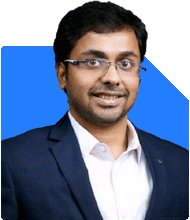I like to invest in digital gold or silver . Is it right time to invest in digital gold or silver if yes then when website tobe used for same
Ans: You have shown good curiosity and awareness by thinking about investing in digital gold or silver. At your wealth level, adding a small portion of such commodities can help diversify your portfolio. It can also act as a hedge against inflation and currency weakening. Still, it must be approached in a disciplined and well-planned way, not as a short-term trade. Let’s analyse this in detail.
» Understanding the role of gold and silver in your portfolio
Gold and silver are traditionally viewed as wealth protectors. They don’t generate regular income, but they help preserve purchasing power during uncertain times.
In India, gold has also emotional and cultural value, while silver often reflects industrial demand.
Digital formats now make it easy to buy, hold, and sell without storage or purity worries.
However, the purpose of investing in gold or silver should be diversification, not speculation.
They work best when held as part of a balanced asset allocation—usually 5% to 10% of your overall portfolio.
Since you already have large holdings in fixed income and equity, this commodity layer can give extra protection.
» Timing the investment
It is not possible to perfectly time gold or silver investments. Both prices depend on multiple global factors—interest rates, dollar movement, inflation, and geopolitical risks.
However, gold usually performs well when global uncertainty or inflation rises. Silver has higher industrial use, so it often moves more sharply and can be volatile.
Since your goal is long-term stability, you don’t need to worry about the perfect entry time.
The best approach is to invest gradually. You can start with small monthly or quarterly investments through systematic purchase plans available on trusted platforms.
This spreads out your cost and reduces timing risk.
Avoid unknown websites or unverified mobile apps.
Your Certified Financial Planner or your MFD (Mutual Fund Distributor) with CFP credentials can help identify a safe and transparent platform.
They can also guide you on how to link this investment with your overall portfolio.
Please don’t buy through e-commerce or wallet apps without checking the underlying storage partner and redemption process.
» Evaluating physical vs digital gold
Digital gold gives you flexibility and ease.
You can start with small amounts, even Rs.500, without worrying about storage or purity.
When you reach a larger value, you can convert it to physical gold if needed.
Physical gold needs storage and purity checks, and it often has making charges.
Digital format avoids these issues but has to be bought from regulated partners.
If you hold for long term, check whether the platform limits the holding period (some allow only up to 5 years).
If you want indefinite holding or larger exposure, it may be better to use professionally managed gold mutual funds or gold ETFs, but only through regular plans under guidance of a Certified Financial Planner.
» How much to invest
At your portfolio size, 5% to 7% in gold and 1% to 2% in silver is adequate.
Too much allocation will reduce your overall growth potential because gold and silver don’t give compounding returns like mutual funds.
They only protect value during inflationary or uncertain periods.
You may invest in stages, spreading over the next 6–12 months.
This avoids buying at one single price point and keeps your cost averaged.
» Tax treatment of digital gold and silver
Digital gold is treated as a capital asset under Indian taxation.
If held for more than three years, it qualifies as long-term capital gains.
Long-term gains are taxed at 20% with indexation benefits.
If you sell before three years, it is treated as short-term gain and taxed as per your income slab.
Silver follows the same taxation structure as gold.
As an NRI, tax treatment will depend on your residential status and repatriation rules.
Your Certified Financial Planner can guide you in aligning this with your home country’s tax norms.
» Monitoring and storage
After purchasing digital gold or silver, keep your digital receipts and account statements safely.
Reconcile periodically to ensure the holding is reflected correctly.
You can choose to redeem for cash or physical delivery later if needed.
Ensure that the platform offers 100% backed physical storage and allows seamless redemption to your bank account.
Do not invest on platforms that do not provide full transparency about storage or audit verification.
» When to review or exit
Gold and silver should be reviewed annually along with your portfolio.
If your allocation grows beyond 10% due to price increase, you can book partial profit and rebalance.
Similarly, if prices fall heavily, you may add slightly to maintain your chosen ratio.
Avoid frequent buying and selling. Treat this as a protective layer, not a trading opportunity.
» Role of Certified Financial Planner or MFD with CFP
Your Certified Financial Planner or MFD (with CFP credential) can help you identify the right platform, decide the right allocation, and link this investment to your long-term goals.
They will ensure that your gold or silver investments stay within your overall risk profile.
They can also align it with your son’s education funding, home loan, and retirement corpus target so that all parts of your plan stay connected.
If you handle this directly without expert support, you may end up over-allocating or missing better alternatives.
A CFP can guide you on tax compliance, transfer options, and exit planning too.
» Finally
Yes, you can consider investing in digital gold or silver now.
But keep your allocation small, enter gradually, and choose only trusted regulated platforms.
The purpose is diversification, not chasing quick profit.
Always consult your Certified Financial Planner or MFD with CFP credentials before executing the transaction.
They will ensure that your investment aligns with your larger wealth strategy and that it remains tax-efficient and safe.
Your discipline and foresight continue to strengthen your financial journey.
With the right guidance, digital gold and silver can add stability to your already well-structured portfolio.
Best Regards,
K. Ramalingam, MBA, CFP,
Chief Financial Planner,
www.holisticinvestment.in
https://www.youtube.com/@HolisticInvestment





















